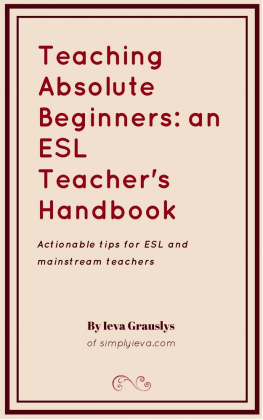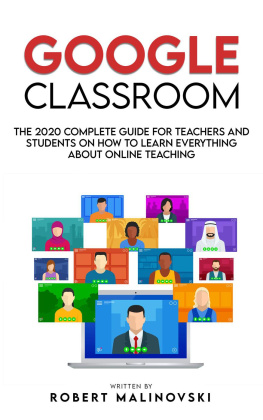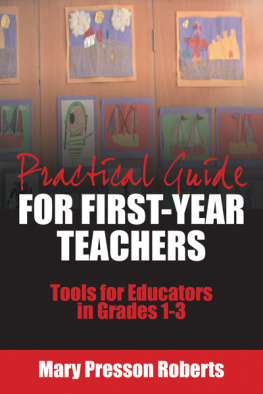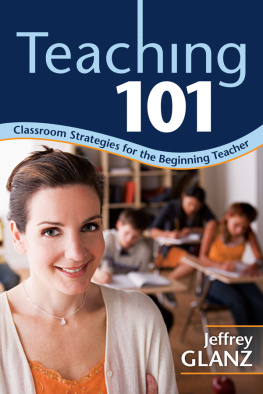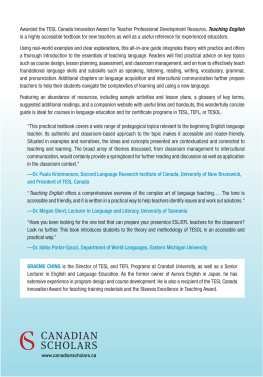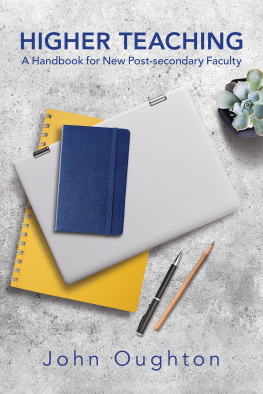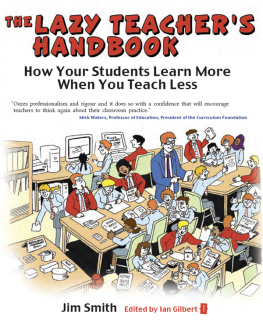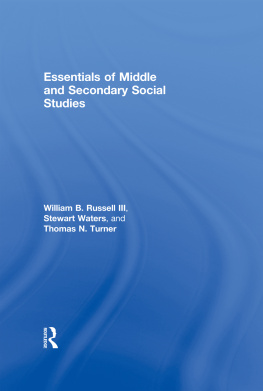Tartalomjegyzk
Acknowledgements
Thank you to Julie Emerson and Dina Murphy, for their invaluable support, insight and suggestions in the process of creating this book.
Thank you to my amazing simplyieva.com readers. You asked questions, gave feedback and just were there until the idea of this book took a definite form. I couldnt have done this without you!
Thank you to my family for believing in me and supporting me throughout this journey.
Finally, thank you to Deb St.Lawrence, my very first ESL mentor. Without her, there would simply be no Ieva, the ESL teacher.

Teaching Absolute Beginners: an ESL Teachers Handbook Ieva Grauslys 2017 www.simplyieva.com . All Rights Reserved.
No part of this publication may be reproduced or redistributed in part or in whole without the express written permission of the author. This ebook is protected by copyright and intellectual property laws. It is solely for personal, non-commercial use.
You may download or print one copy of this ebook for your personal use. Please do not share it with others in any way. However, the pages that contain lesson plan template, newcomer teaching checklist and collaborative lesson plan may be photocopied for educational purposes only, for use in the classroom and teacher handouts.
At times, affiliate links have been used in this ebook. If you make a purchase through one of these links, I may earn a commission from your purchase at no extra cost to you. Thank you for your support!
Please email me at simplyieva@gmail.com with details of any errors or incorrect links in this ebook so that I can update the materials.
Thank you !
Dedication
For my mom
Skiriu mamai
Introduction
Language is among those topics that can cause passionate debates and raise more questions than an average person could answer. After all, it is our means of communicating our wins, losses, loves, hatreds and everything else in between that makes us human.
Learning to speak another language and/or teaching it are extremely important and rewarding; yet no easy feat. Learning and teaching a language involves so much more than just grammar and sentence structures. It uncovers a completely new world for both the teacher and the student. Teaching the language that you speak to others involves even more learning about your own background as well as opening up to that of your students.
How it all began

Sometimes we go through experiences that literally pave the way for the rest of our lives. We may not know it at the time but, as they say, hindsight is always 20/20. My experience, now that I am looking back at it, shook my world then and ignited my passion for teaching English learners .
I was born in Lithuania when it still was part of the Soviet Union. Lithuanian is my first language and Russian was required for all to know - speak it, read it a nd write it. I started learning English when I was in 5th grade and it quickly became one of my favorite subjects. Possibly because my dad, who was one of my first teachers of English, was extremely passionate about learning it. Possibly also because English was a gateway to a new world, a world that was more promising than the everyday behind the iron curtain.
Then, at 15, I won a national English-language competition and 6 months of living and studying in the United States. And yes, this was THE experience that I mentioned at the very beginning - the one that shaped the course of my life. I was deposited in to a developed Western country from a tiny Baltic state that was recovering from Soviet PTSD. The culture shock was indescribable and the learning experience priceless.
I have since gotten my BA in English and a Masters in Teaching English as a Foreign Language. Although teaching was not my initial course of action, I believe that we end up where were meant to be no matter how winding our road to it is.
So here I am, back in the States (after Id sworn Id never be able to live here), in my 12th year of teaching English to students who, much like me many moons ago, enter an American school with no idea what to expect and with little to no English knowledge to help them through it. Still, every time a new student enters the school I work at, I always remember the feeling I had when I was 16 and in the U.S.A. - totally overwhelmed but deep down knowing that I could do it. I had no idea how I would make it work but I hoped that the teachers would help me navigate.
I know you are the teacher who wants to help those students. The ones, who have come with families where both parents have some English knowledge and are able to help their child; the ones, who have come here following one parent in search of a better life; as well as the ones, who are the only ones in their family that understand the basics of English. And all of them trying to make sense of who they are and how they should be in this new, unfamiliar, yet promising world.
I also know that teaching English to non-native speakers is a field that raises more questions than provides answers. In a way, it is like medicine: the books deliver tons of information but in reality, each case is different. For example, t he language proficiency levels of our students are not uniform because they come from such a variety of backgrounds that sometimes it is impossible for us, the teachers, to fully grasp what they know or dont know. In addition, there are many myths about second/additional language learning . One of them is that learning two languages at the same time is detrimental to ones development. Another one is that one language will interfere with the other (Paradis et al.).
Finally, ESL teacher preparation and requirements for teaching non-native speakers are different in each state. Sometimes people fall into teaching ESL without any prior experience or background in it and have to learn as they go. Others intend to become ESL teachers from the very beginning and go through college/certification programs to achieve their goal.
After starting my blog www.simplyieva.com in the fall of 2016, I learned from my readers that teaching beginners is a topic that many of us wonder about. My blog posts about what to teach absolute beginners and the strategies that would help reach them became two of the most popular posts on the blog. That is why writing an ebook that includes more detailed information that would help the teachers of absolute beginners (and their mainstream colleagues) was a natural next step.
In this book we will put all myths aside. We will look into what it takes to learn a language and how we can help our beginner students conquer the first steps in acquiring English. We will go over the checklists of what information is necessary for you, the teacher, before starting to teach as well as what and how to teach your new students.
This book is aptly named an ESL Teachers Handbook. My hope is that you will find it handy and it will become a quick reference for you when you have questions about teaching absolute beginners.
Shall we begin?
Chapter overview
Chapter I - Who Are Beginning English Learners? - provides an overview of three types of beginning English learners with a short description of each as well as what to expect in each case.
Chapter II - What Does It Take to Learn a Language? - dives into the stages of language acquisition, its relative timeline as well as the sociocultural aspects of learning another language. A handy table with student behaviors and suggested tips for teaching is included.

